#India Rag Bengali : Bengali News
Explore tagged Tumblr posts
Text
B-2 : Why Indians Need to Watch Frank Capra’s Movies?
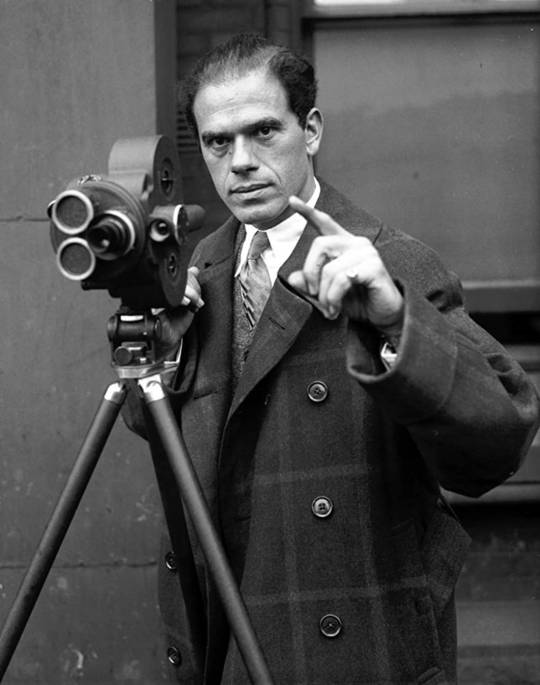
If you're a fan of Old Hollywood, you can realize the significance of Frank Capra (1897-1991) in the American Film Industry. An Italian by origin, he spent 89 years in the United States. His life story was that of a "rags to riches" one - an ideal example of achieving the American Dream. He also served in the United States Army during the Second World War - and made several war documentaries. One can learn about it in the Netflix series Five Came Back - with Guillermo del Toro narrating his story. Capra has influenced many directors of the post-World War II era (from Indian directors like Satyajit Ray & Raj Kapoor to foreign directors like Akira Kurosawa, Steven Spielberg, & Francois Truffaut). But what is it that makes Capra's work evergreen?

Before I start, I wish to talk about my rendezvous with Capra. I first heard about him when he attended the 1972 Oscars to co-present the Best Director Award with Natalie Wood (to William Friedkin for The French Connection). I watched six of Capra's movies between December 2021 and July 2022. They are:
It Happened One Night (1934)
Mr. Deeds Goes to Town (1936)
You Can't Take It with You (1938)
Mr. Smith s Goes to Washington (1939)
Meet John Doe (1941)
It’s A Wonderful Life (1946)

Clark Gable and Claudette Colbert in It Happened One Night (1934)
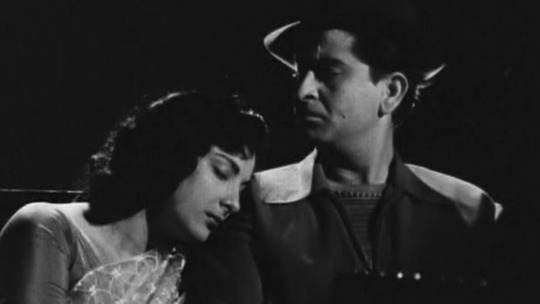
Raj Kapoor and Nargis in Chori Chori (1956)
I loved every single picture. While watching It Happened One Night, I found it similar to the 1956 Raj Kapoor-Nargis starrer Chori Chori (not to mention their final collaboration). The screwball comedy got remade in several Indian languages - even the 1991 movie Dil Hai Ki Manta Nahin (with Aamir Khan and Pooja Bhatt). The key themes the movie exhibits are the class and socio-economic differences between the two lead characters - along with love, freedom, poverty, unemployment, etcetera.
It would also be interesting to know that It Happened One Night was the first of the three movies to win the "Big Five" awards at the Oscars: Best Film, Best Director, Best Actor, Best Actress, and Best Screenplay. The other two movies are One Flew Over The Cuckoo's Nest (1975) and Silence of The Lambs (1991).

Gary Cooper and Jean Arthur in Mr. Deeds Goes to Town (1936)

Claude Rains and James Stewart in Mr. Smith Goes to Washington (1939)
Mr. Deeds and Mr. Smith grabbed my attention because of the themes discussed in the two (like corruption, misuse of power, beliefs in democracy, patriotism, etcetera). The most significant element is the depiction of the ideal 'American Hero' - which one can see in Gary Cooper and James Stewart, respectively. However, the hero is something that every nation wishes to have - including ours. Mr. Deeds Goes to Town got remade in Bengali (Raja-Saja of 1960 with Uttam Kumar) and Tamil (Nallathambi of 1949 with S. Krishnan). Whereas Mr. Smith Goes to Washington did not have an Indian adaptation.
However, Mr. Smith reminded me of how the English tried to suppress such movements during the freedom struggle. Scenes like 'young boys printing newspapers and citizens launching movements to prove a man's innocence & bureaucrats and politicians trying to stop it' remind us of such events. One must remember that it got released less than three years before Gandhiji launched the Quit India movement of 1942. Even after independence, now and then, we come across news headlines featuring similar happenings.

Gary Cooper and Barbara Stanwyck in Meet John Doe (1941)

Amitabh Bachchan and Shabana Azmi in Main Azaad Hoon (1989)
Meet John Doe is about a "grassroots" political campaign created unwittingly by a newspaper columnist with the involvement of a hired homeless man and pursued by the paper's wealthy owner. The renowned Indian adaptation of the film is the Amitabh Bachchan-Shabana Azmi starrer Main Azaad Hoon (1989). It's one of the rarest movies where Bachchan has not fought the corrupt violently.
Although John Doe survives in the end, Azaad kills himself to stay true to the words of the reporter's fictional character. Azaad could have avoided it - but he did not do it so that the people's anger and urge to fight the corrupt system never cool down. Azaad also leaves a message for his supporters and appeals that Azaad should evolve in them. Capra claimed that he never found a satisfying ending for Meet John Doe. However, Main Azaad Hoon provides a finale that suits the main character's commonality and mythic stature.
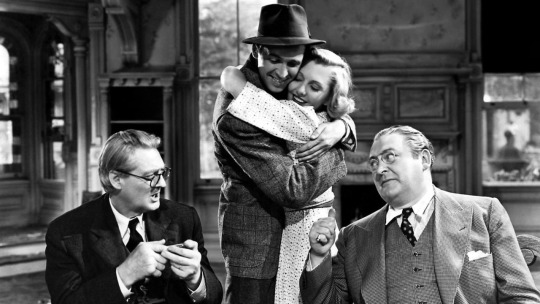
(5) Lionel Barrymore, James Stewart, Jean Arthur, and Edward Arnold in You Can’t Take It with You
And finally, You Can't Take It with You (for which he won his third Directing and second Best Picture Oscar) has a similar theme to It Happened One Night. It's a love story of a successful banker's son and his stenographer. In several Bollywood movies, we see romances between a rich boy and a poor girl (and vice versa) - but they are not like the romances between Capra's characters.
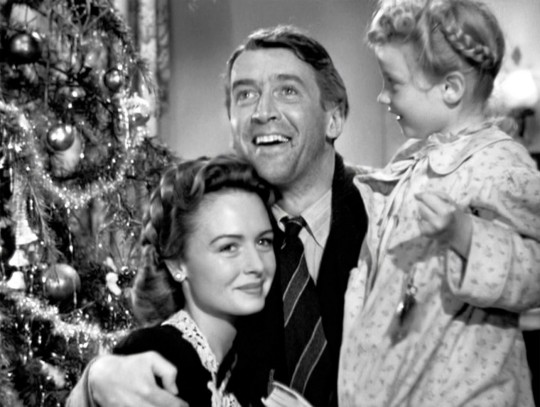
(6) Donna Reed, Stewart, and Karolyn Grimes in It’s A Wonderful Life
This article would be incomplete without talking about It's a Wonderful Life (his first movie after leaving the Army) - which gives an important lesson about the significance and beauty of human life. It teaches us that our work can impact the people we come across - and those with friends are never lonely.
But that's not all!

We live in his world. It is the "Capra Universe" - where demons of society have surrounded us - and all we need is a "hero" to fight against them. Indeed, there are various Indian movies with similar themes (and distinct from Capra's plots). However, one can the difference only after watching them. Capra has taught us that you can be a rebel or an "angry young man" - without having a gun or a weapon to fight the system and beating up the bad guys. All you must do is to believe in yourself and the moral principles of society. He gave complex social and economic problems a human face - showing unemployment and vast concentrations of economic power.
Elaborating on the themes expressed in Capra's most famous works, two of the most reoccurring subjects are selflessness and a familial sense of community. That's why there is always strong support for the lead characters.
The only difference between Capra's movies and the Indian versions is the inclusion of songs - a standard Indian Cinema formula.
With themes depicted in them and the problems we see around us, Indians must watch some of Capra's movies. There have been directors who have remade them in the Indian context (and there will be in the future, no doubt). However, they won't have the exact authenticity as those of Capra's movies.
#frank capra#director#actors#james stewart#gary cooper#clark gable#raj kapoor#amitabh bachchan#jean arthur#donna reed#nargis dutt#claudette colbert#old hollywood#five came back
8 notes
·
View notes
Text
Why Indians Need to Watch Frank Capra’s Movies? - July 20, 2022

If you're a fan of Old Hollywood, you can realize the significance of Frank Capra (1897-1991) in the American Film Industry. An Italian by origin, he spent 89 years in the United States. His life story was that of a "rags to riches" one - an ideal example of achieving the American Dream. He also served in the United States Army during the Second World War - and made several war documentaries. One can learn about it in the Netflix series Five Came Back - with Guillermo del Toro narrating his story. Capra has influenced many directors of the post-World War II era (from Indian directors like Satyajit Ray & Raj Kapoor to foreign directors like Akira Kurosawa, Steven Spielberg, & Francois Truffaut). But what is it that makes Capra's work evergreen?
Before I start, I wish to talk about my rendezvous with Capra. I first heard about him when he attended the 1972 Oscars to co-present the Best Director Award with Natalie Wood (to William Friedkin for The French Connection). I watched six of Capra's movies between December 2021 and July 2022. They are:
It Happened One Night (1934)
Mr. Deeds Goes to Town (1936)
You Can't Take It with You (1938)
Mr. Smith s Goes to Washington (1939)
Meet John Doe (1941)
It’s A Wonderful Life (1946)
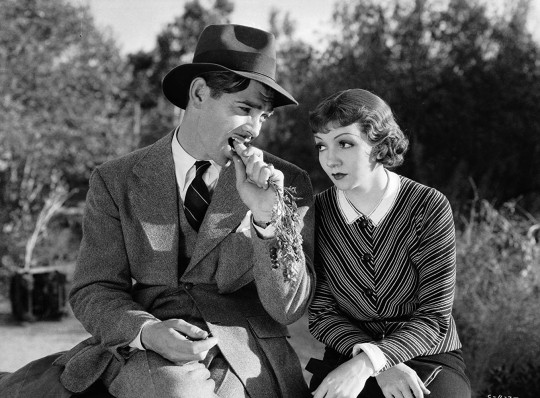
(1) Clark Gable and Claudette Colbert in It Happened One Night
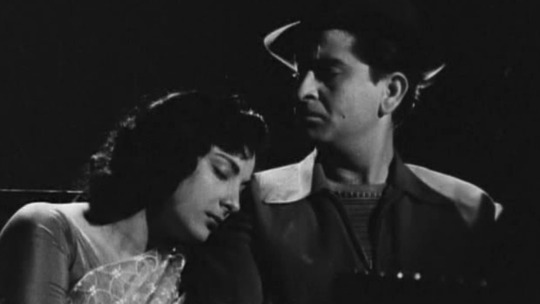
(2) Raj Kapoor and Nargis in Chori Chori
I loved every single picture. While watching It Happened One Night, I found it similar to the 1956 Raj Kapoor-Nargis starrer Chori Chori (not to mention their final collaboration). The screwball comedy got remade in several Indian languages - even the 1991 movie Dil Hai Ki Manta Nahin (with Aamir Khan and Pooja Bhatt). The key themes the movie exhibits are the class and socio-economic differences between the two lead characters - along with love, freedom, poverty, unemployment, etcetera.
It would also be interesting to know that It Happened One Night was the first of the three movies to win the "Big Five" awards at the Oscars: Best Film, Best Director, Best Actor, Best Actress, and Best Screenplay. The other two movies are One Flew Over The Cuckoo's Nest (1975) and Silence of The Lambs (1991).
Below are the heroes of Capra:
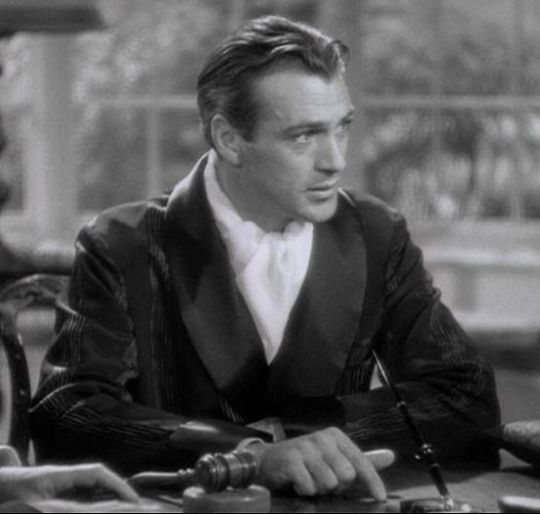
(1) Gary Cooper in Mr. Deeds Goes to Town

(2) James Stewart in Mr. Smith Goes to Washington
Mr. Deeds and Mr. Smith grabbed my attention because of the themes discussed in the two (like corruption, misuse of power, beliefs in democracy, patriotism, etcetera). The most significant element is the depiction of the ideal 'American Hero' - which one can see in Gary Cooper and James Stewart, respectively. However, the hero is something that every nation wishes to have - including ours. Mr. Deeds Goes to Town got remade in Bengali (Raja-Saja of 1960 with Uttam Kumar) and Tamil (Nallathambi of 1949 with S. Krishnan). Whereas Mr. Smith Goes to Washington did not have an Indian adaptation.
However, Mr. Smith reminded me of how the English tried to suppress such movements during the freedom struggle. Scenes like 'young boys printing newspapers and citizens launching movements to prove a man's innocence & bureaucrats and politicians trying to stop it' remind us of such events. One must remember that it got released less than three years before Gandhiji launched the Quit India movement of 1942. Even after independence, now and then, we come across news headlines featuring similar happenings.

(3) Gary Cooper and Barbara Stanwyck in Meet John Doe

(4) Amitabh Bachchan and Shabana Azmi in Main Azaad Hoon
Meet John Doe is about a "grassroots" political campaign created unwittingly by a newspaper columnist with the involvement of a hired homeless man and pursued by the paper's wealthy owner. The renowned Indian adaptation of the film is the Amitabh Bachchan-Shabana Azmi starrer Main Azaad Hoon (1989). It's one of the rarest movies where Bachchan has not fought the corrupt violently.
Although John Doe survives in the end, Azaad kills himself to stay true to the words of the reporter's fictional character. Azaad could have avoided it - but he did not do it so that the people's anger and urge to fight the corrupt system never cool down. Azaad also leaves a message for his supporters and appeals that Azaad should evolve in them. Capra claimed that he never found a satisfying ending for Meet John Doe. However, Main Azaad Hoon provides a finale that suits the main character's commonality and mythic stature.

(5) Lionel Barrymore, James Stewart, Jean Arthur, and Edward Arnold in You Can’t Take It with You
And finally, You Can't Take It with You (for which he won his third Directing and second Best Picture Oscar) has a similar theme to It Happened One Night. It's a love story of a successful banker's son and his stenographer. In several Bollywood movies, we see romances between a rich boy and a poor girl (and vice versa) - but they are not like the romances between Capra's characters.

(6) Donna Reed, Stewart, and Karolyn Grimes in It’s A Wonderful Life
This article would be incomplete without talking about It's a Wonderful Life (his first movie after leaving the Army) - which gives an important lesson about the significance and beauty of human life. It teaches us that our work can impact the people we come across - and those with friends are never lonely.
But that's not all!
We live in his world. It is the "Capra Universe" - where demons of society have surrounded us - and all we need is a "hero" to fight against them. Indeed, there are various Indian movies with similar themes (and distinct from Capra's plots). However, one can the difference only after watching them. Capra has taught us that you can be a rebel or an "angry young man" - without having a gun or a weapon to fight the system and beating up the bad guys. All you must do is to believe in yourself and the moral principles of society. He gave complex social and economic problems a human face - showing unemployment and vast concentrations of economic power.
Elaborating on the themes expressed in Capra's most famous works, two of the most reoccurring subjects are selflessness and a familial sense of community. That's why there is always strong support for the lead characters.
The only difference between Capra's movies and the Indian versions is the inclusion of songs - a standard Indian Cinema formula.
With themes depicted in them and the problems we see around us, Indians must watch some of Capra's movies. There have been directors who have remade them in the Indian context (and there will be in the future, no doubt). However, they won't have the exact authenticity as those of Capra's movies.
1 note
·
View note
Note
Hi! I’d love to read more books from India. Maybe some classics, but more recent stuff too. Do you have any recommendations? As for genres I enjoy lit fic the most. I hope you have a good weekend ✨
hi! thank you, i hope you had a nice weekend too. here you go —
cocoon by bhalchandra nemade (trans. sudhakar marathe): coming-of-age story; follows a 21 y/o coming to terms with moving to a new city, dealing with disillusionment both at home and as a student; kind of stream of consciousness like; it’s a particular favourite
the shadow lines by amitav ghosh: set in the 1960s, explores how world wars, partition, independence, and decolonization affects his family and the people around him
the hungry tide by amitav ghosh: about a marine biologist studying the sunderbans; also explores the tension between development and ecology and the human-environment conflict; really good environmental fiction
a fine balance by rohinton mistry: about four people brought together during and by the emergency (1975) in mumbai; their friendship and what it means for either of them
kanthapura by raja rao: about how satyagraha comes to a south indian village, how people receive it; about the popular memory and myth of gandhi; a little dense while reading and not everyone’s cup of tea, but there’s something to be said with how it mixes public memory with storytelling
baluta by daya pawar (trans. jerry pinto): pawar’s memoir of being ‘untouchable’ in mumbai, living in the city’s underbelly; very raw, and it’s a good translation
midnight’s children by salman rushdie: follows the life of salim, who’s born at the stroke of midnight on august 15, 1947 and is now telepathically linked with other ‘midnight’s children’; mixes magical realism with historical fiction to explore the changes taking place after independence
untouchable by mulk raj anand: about a sweeper’s son, bakha, working to come to terms with his reality and living a life in the caste role he’s born into
here’s some more recent stuff —
maharani by ruskin bond: about the queen of no-longer kingdom near mussoorie; how she and her family cope with no longer being royalty in a democratic republic
also literally anything by ruskin bond. especially check out the room on the roof, a flight of pigeons, the blue umbrella
the lives of others by neel mukherjee: if you like generational novels about families, this is for you; about how this bengali family in kolkata copes with partition, the naxal movement, and everything else happening in bengal and india in the 1960s and 1970s
em and the big hoom by jerry pinto: follows a goan catholic family in mumbai as they deal with the mother’s mental illness; very tender, also jerry pinto is great
the adivasi will not dance by hansda sowvendra shekhar: a collection of stories set in marginal jharkhand
serious men by manu joseph: about ayyan mali, who weaves stories for his son in mumbai’s slums; explores ambition and ego and how peripheral lives navigate socio-economic settings
ghachar ghochar by vivek shanbag (trans. srinath perur): a rags-to-riches story of a kannada family; how the sudden presence of money tears the family apart; it’s a short book, worth a day’s read
cobalt blue by sachin kundalkar (trans. jerry pinto): about two siblings who fall in love with the same boy; traces both their relationship with the boy and the subsequent impact on their family
name place animal thing by daribha lyndem: explores different lives set in shillong as they deal with politically charged social settings
and if you’re interested in historical fiction, check this list.
i hope you find something you like!
856 notes
·
View notes
Text
India Rag
India Rag is a Primary Source of News for Patriotic IndiansPosted: Dec 08, 2018 3:38 PM IST
Authentic news for True Indians!
West Bengal, India – India Rag is a Bengali web portal that actively supports “Narendra Modi” – Prime Minister of India. Through a network of channels, India Rag is committed to provide authentic and quality news to its viewers. India Rag takes pride in being Pronamo which means to be in complete support of Bharatiya Janata Party. Bengali News, Bangla News, 24 ghanta, Eisamay, Ebela are the streams that funnel news to the patriotic Indians.
India Rag is concerned about who watches its content. It believes in transparency of news and has specifically announced on its website that it publishes its news for only pro Indians and not seculars. In their words: “India Rag web portal is only for Patriotic people of India and they never support secular and Buddhijibi. India rag also supports Hindustan and Patriotic people who work for India”. This statement clearly shows their priorities and stance regarding the politics of India.
Recently, India Rag has been in a rush to improve its quality. Just like another portal, India Rag has humble beginnings but due to constant quality assurance, it has become popular in its arena. It has climbed up the charts in Alexa Ratings; that ranks different websites on the basis of the traffic it receives. India Rag has 10,000 regular visitors who are being benefited by its content. Furthermore, India Rag has contemporarily started an India Rag YouTube Channel that stays busy in providing authentic news and uploading special politics related videos at regular intervals. In order to keep their viewers updated about all the changes in Indian political atmosphere, India Rag is not only limited to website but has grown to be available at more social media channels:
Twitter users can follow it at @india_rag. Facebook users can find the using @indiarag. While YouTubers can look for them using @Indiarag.
Being a web portal, India Rag does not deal in selling of any products. However, it really appreciates writers who are interested in sharing their views on its platform. Such writers are encouraged to contact their official team on their email address: [email protected].
Unlike its competitors India Rag does not believe in misinforming its readers and viewers by appearing to be impartial in the domain of Indian politics. They are proud supporters of Narendra Modi and RSS (Rastriya Swamsevak Sangh). All their content is in the favor of these entities and they are courteous enough to inform their subscribers about their affinity.
1 note
·
View note
Text
GUIDE TO SUSTAINABLE LIVING FROM INDIA
A Guide to Sustainable Living from India!
Living sustainably is about thinking sustainably. A sustainable lifestyle is about the choices you make every single day. Choices that are so simple that it is hard to imagine the impact they could possibly have on the world.
The most common dismissal of conscious sustainable choices is on the count that it will be expensive and tedious, it will require us to let go of our ways and be uncomfortable. Though if we take a moment and rethink the notion of sustainable living, we might see that sustainability isn’t about letting go, it is not ‘one at the expense of others’, it is rather about holding on, holding on to what we value.
Values are the thread that weaves India together, making it one of the most interesting places to explore sustainable living. Most of the answers we are looking for have been around us all our lives. In a world torn between prioritizing sustainability or development, India can help us see how sustainability makes development also more accessible, how sustainable living is not a pipe dream. It is not a utopia made of what one could do when they have everything. Rather it is the reality of what one does today with all that they already have.
All of this sounds nice to read, nicer to say, as for what we can do? India has many stories to tell:
Clothes to Rags to Clothes to Rags to Clothes
The ‘circular design’ i.e a continual use of resources such that there is minimal or no waste, is no new phenomenon in most Indian households. Most old clothes turn into dusters and table cleaners, into raw materials for patchwork, and sometimes into new clothes for many others. This reluctance towards throwing anything away creates a space for being crafty with what you have, repurposing old items, and reusing most.
Invisible recyclers and a door-to-door barter system
In almost all cities in India, there is an informal barter system that has operated for many years now. The Waghris, a nomadic community, have been operating a system of trade where they would barter old clothes for new utensils and household items. This mesh of inter-community/inter-state linkages over the years has built a network of second-hand trade, a recycling system. They collect old clothes, often by the weight, and exchange them for new utensils. These clothes invariably end up in markets for second-hand items (often referred to as chor bazaars, chindi markets, mandi, etc.) hidden in tiny lanes in big cities, to be sold and used again.
Zero-Waste Recipes
Cooking in India is not just a myriad of flavors, it is also often an inter-generational transfer of skills. Ingenious ways of making the most of every part of a plant/fruit/vegetable have been passed on from generation to generation, culture to culture in different forms. Many cultures in India have their own spin on dishes that fit into what the world is reclaiming as zero-waste cooking. Take Rajasthani food, or Bengali for that matter, the practice of using every part of watermelon including the seeds and the peels in different snacks and dishes is fairly common. In Rajasthan, where deserts and droughts are common, every resource is valued. Food was not always abundant. Rajasthani cuisines are famous for using various kinds of cactus and dried vegetables, as well as dishes made exclusively out of peels (known as chilke ki sabzi)
Act Local, Do together!
Bringing together a traditional knowledge/skill base with contemporary entrepreneurship has made some strong individual drivers of sustainability all over the country. From sustainable fashion brands rejuvenating local economies to initiatives that upcycle waste materials to create unique products and generate employment. Many entrepreneurial engineers, designers, thinkers all over the country have established unique models, the collective identity inspires many to participate in whatever way they can. An engineer developing waste management using heat addition, a designer conceptualizing zero-waste cutting in the context of weaving, a farmer coming together with social scientists to propagate permaculture, there is a lot always happening somewhere.
It then comes down to what we set out to find, what we believe in, and what we are willing to do!
If you’re feeling inspired,
To donate your old clothes
To find a local second-hand items market
To try out some zero-waste Indian recipes
To support a local brand: flourish.shop
0 notes